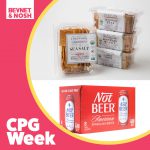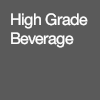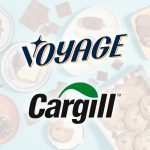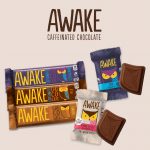NOSH Voices: The Journey from Product to Brand

About the Author: James is a strategy consultant for emerging food and beverage brands with a professional background in strategy consulting, market research and social science. He has advised well over 75 food and beverage brands on all aspects of growth strategy (i.e. marketing, innovation, channel placement and pricing), from large legacy brands such as Triscuit to small, early stage NOSH brands.
I have been a loud proponent, for years, that early stage ‘brands’ don’t start off as brands at all, even though we are accustomed to referring to them by their trademarks. Trademark. Brand. Two very different things. A trademark is just a linguistic handle for quick reference to a business. It does not mean that consumers will, upon seeing or hearing the trademark, suddenly go out and buy it or try a new product line offered by it.
More importantly, consumers of a new trademark do not impute much rich meaning to it, certainly not like the company founder does. This disconnect between founder and consumer can lead to bizarre marketing strategies that just don’t work and waste valuable marketing time.
So, when does a product actually become a brand? Many clients have asked me this question during discussions about growth strategy for their companies. The key to the answer is to understand this transition as a cultural process that cannot be forced through marketing and PR. But it is a transition that operators can indirectly measure and track and one they can strategize against.
Here’s the quick answer: a trademarked product line generally becomes a ‘brand’ between $75 and $125M in gross annual sales. $100M is a safe threshold to guide strategy. Seems like a lot, right? And, just because you get there, it doesn’t mean you automatically have a brand. Why not? You have to read the not-so-quick answer.
The not-so-quick answer:
Although many new entrepreneurs in the CPG industry often confuse “trademark” with “brand”, the difference is strategically important. A trademark is just a bunch of letters that no one else in your operating category can legally use (if you registered it properly). It may have multiple layers of rich meaning to the owner, but to the consumer it has denotative meaning and whatever pop culture associations the letters trigger.
A brand, on the other hand, has accreted other layers of meaning. These are based firstly on the power of the product experience and demonstrated category expertise, secondarily on the cultural dynamics of the consumption occasion it is most frequently consumed on, and thirdly as a cultural institution itself (i.e. intrinsic, imputed meanings). These three layers of accretive meaning are what give a brand the cultural power to prompt high levels of quick trial from new product launches and to create temporary sales lift after promotional campaigns that essentially ‘remind’ heavy users to keep buying it.
So how do you know when you’ve got something that has that kind of meaning? Here are some empirical signs that a product line has truly become a brand:
- New products grow incremental, seven figure revenue streams (even if at a slower rate than the base) even if only for 2-3 years (e.g. Lay’s, Oreo, Hershey are masters at this)
- Awareness of the brand has built well ahead of household penetration
- The trademark now has clear ‘emotional’ connotations related to the user experience that are easy for heavy users to articulate
Why should you care as a business person about this transition?
Well, for one thing, if a product line is not functioning culturally as a brand, it is not likely to generate successful line or ‘brand’ extensions. If these additional product launches actually manage to stay on shelf, they will be essentially confusing the consumer base (and market) as to the core expertise of the company. The result is either confusion OR brand dilution and diminution of the brand’s aura of expertise.
And consumers want these emerging brands to be experts. Otherwise they would be satisfied with already existing mainstream alternatives. Building ‘expertise’ in the eyes of the consumer, however, is about more than ‘attributes’, it is about communicating implicitly or explicitly that you have the optimal attributes for specific eating occasions. This is the behavioral basis of expertise in food marketing and also what builds powerful brands in the marketplace.
If you look at the natural and specialty incubated brands that have successfully scaled above $100M and are still growing, you’ll see that virtually all of them moved early to be experts in a specific category (examples: Horizon in organic milk, Chobani in yogurt).
Moving from product to brand is about focusing on an expert innovation in a specific core category, relentless marketing and selling of that expertise, and letting consumers accrete high order emotional meaning to the real-world consumption of your product, the results of that expertise.
Consumers build brands, not founders (or agencies). Founders make great products (we hope).
Winners in the changing retail marketplace intuitively know this. Those who fail to learn this dynamic can easily wind up ‘pushing’ a product line that is unfocused, not-innovative and ultimately doesn’t accrete powerful emotional meaning. In essence, the product will fail to ever become a brand at all.
At Project NOSH and BevNET, we pride ourselves on having a robust network of food and beverage entrepreneurs, industry insiders and advisers. NOSH Voices is a series of columns penned by respected experts to provide a spectrum of views from within the food community. Interested in contributing to NOSH Voices? Contact the Editors.












